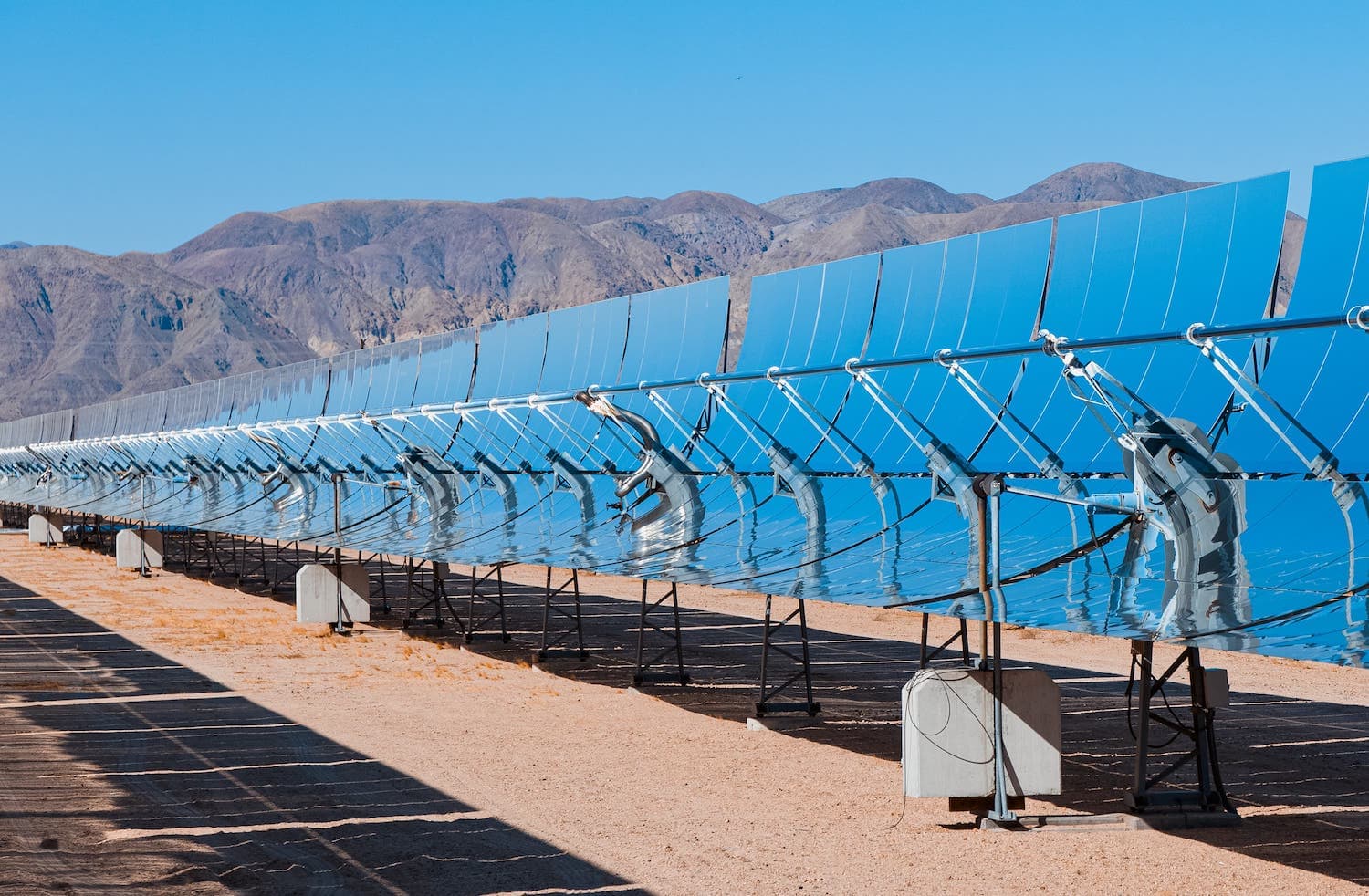
The Low-Carbon Development Program
The transition to low-carbon development is a strategic priority for JSC «Kazakhtelecom». The company has developed a Low-Carbon Development Program until 2030
The company has planned to reduce its total greenhouse gas emissions by 13% by 2032 as part of fulfilling the country's commitments under the Paris Agreement. As a long-term goal, the company aims to achieve carbon neutrality by 2060, taking into account the task set by the President of the Republic of Kazakhstan to decarbonize the national economy.
Being a high-tech digital and telecommunication holding, makes a significant contribution to the low-carbon development of the Republic of Kazakhstan, stimulating decarbonization in other sectors of the national economy through its core activities. The company is aware that its innovative and technological services, products, and solutions already help millions of corporate and retail customers reduce energy consumption, as well as direct and indirect greenhouse gas emissions.
As part of the transition to low-carbon development, the company plans to promote projects and new technologies (including IoT) that contribute to reducing the carbon footprint and increasing energy efficiency. The company will contribute to the development and promotion of a wide range of digital and telecommunication services and products that positively influence the intensity and pace of greenhouse gas emissions reduction by our clients and the economy of the Republic of Kazakhstan as a whole. As part of the development of the renewable energy market in Kazakhstan, the company will seek to purchase alternative energy and transition to environmentally friendly fuels.
As part of the transition to low-carbon development, the company plans to promote projects and new technologies (including IoT) that contribute to reducing the carbon footprint and increasing energy efficiency. The company will contribute to the development and promotion of a wide range of digital and telecommunication services and products that positively influence the intensity and pace of greenhouse gas emissions reduction by our clients and the economy of the Republic of Kazakhstan as a whole. As part of the development of the renewable energy market in Kazakhstan, the company will seek to purchase alternative energy and transition to environmentally friendly fuels.






The corporate system for managing climate risks will be improved, and regular training and engagement of staff in practices related to climate change mitigation will be conducted. JSC «Kazakhtelecom» will seek to enter the green bond market and other financial instruments that will contribute to the implementation of the company's low-carbon and energy-efficient projects.
To increase transparency in the field of low-carbon development, annual climate reporting within the international Carbon Disclosure Project (CDP) platform is planned.
The company will strive to increase awareness of greenhouse gas emissions by actively informing employees, suppliers, investors, and the public about our approach and results in the field of greenhouse gas emissions management and reduction.
In order to ensure the implementation of strategic objectives for sustainable development for 2023, the motivating key performance indicators of Kazakhtelecom JSC (corporate KPI of the Company), motivational efficiency of the heads of structural divisions and top managers of branches of Kazakhtelecom JSC, aimed at implementing the strategic goal « Reducing of carbon footprint by 13% by 2032» were approved.
The following KPI have been adopted as the main KPI for 2023:
1. The indicator «Reduction of energy consumption of lighting systems as a result of the use of energy-saving lamps» describes the share of energy consumption from replacing lighting systems with energy-saving lamps.
2. The indicator «Reduction of energy consumption of lighting systems due to the introduction of motion sensors» describes the effect of reducing energy consumption on lighting when using motion sensors.
3. The indicator «Reduction of personal computer energy consumption as a result of PC hibernation and total shutdown» in the initial phase, describes the share of energy consumption of personal computers per year after implementation of the activity, MW*h computers that are in sleep mode for 13 hours or more.
4. The indicator «Reduction of energy consumption due to switching of copper networks to optical-fibre communication lines» describes the share of energy consumption due to switching of copper networks to FTTH(Fiber to the Home), MWt*h.
The General Directors of the branches of JSC Kazakhtelecom are assigned these KPI, which are cascaded to the Directors of the departments of the branches, to achieve the implementation of the above objectives
To increase transparency in the field of low-carbon development, annual climate reporting within the international Carbon Disclosure Project (CDP) platform is planned.
The company will strive to increase awareness of greenhouse gas emissions by actively informing employees, suppliers, investors, and the public about our approach and results in the field of greenhouse gas emissions management and reduction.
In order to ensure the implementation of strategic objectives for sustainable development for 2023, the motivating key performance indicators of Kazakhtelecom JSC (corporate KPI of the Company), motivational efficiency of the heads of structural divisions and top managers of branches of Kazakhtelecom JSC, aimed at implementing the strategic goal « Reducing of carbon footprint by 13% by 2032» were approved.
The following KPI have been adopted as the main KPI for 2023:
1. The indicator «Reduction of energy consumption of lighting systems as a result of the use of energy-saving lamps» describes the share of energy consumption from replacing lighting systems with energy-saving lamps.
2. The indicator «Reduction of energy consumption of lighting systems due to the introduction of motion sensors» describes the effect of reducing energy consumption on lighting when using motion sensors.
3. The indicator «Reduction of personal computer energy consumption as a result of PC hibernation and total shutdown» in the initial phase, describes the share of energy consumption of personal computers per year after implementation of the activity, MW*h computers that are in sleep mode for 13 hours or more.
4. The indicator «Reduction of energy consumption due to switching of copper networks to optical-fibre communication lines» describes the share of energy consumption due to switching of copper networks to FTTH(Fiber to the Home), MWt*h.
The General Directors of the branches of JSC Kazakhtelecom are assigned these KPI, which are cascaded to the Directors of the departments of the branches, to achieve the implementation of the above objectives
As the largest fixed-line telephony operator in Kazakhstan, a leader in communication services, and one of the largest operators of the national data transmission network, JSC «Kazakhtelecom» supports participation of Kazakhstan in global goals to reduce greenhouse gas emissions and recognizes the importance of developing decarbonization measures. The company actively applies and integrates sustainability principles into its business model. Improving in the field of sustainable development is one of the directions of JSC «Kazakhtelecom» Strategy.
Target reduction of GHG emissions by 2032 compared to the base year 2021
-
13 %
Training "Fundamentals of Energy Management. Principles of energy audit".
In 2024, training for key employees was organized according to the ISO 50001 standard.
The main topics at the seminar were the basics of Energy management and the basics of conducting an energy audit.
The purpose of the ISO 50001 training is to train specialists who will be able to implement and maintain energy management systems (EnMS) at Kazakhtelecom JSC, which will systematically improve energy consumption, increase energy efficiency, reduce energy costs and reduce negative environmental impacts.
The objectives of ISO 50001 training at Kazakhtelecom JSC include:
1. Mastering the requirements of the ISO 50001 standard:
The training is aimed at understanding the structure, principles and requirements of the standard, including energy policy, planning, implementation, verification and continuous improvement of the EnMS.
2. Development of EnMS implementation skills:
The training provides the knowledge and practical skills necessary for the development, implementation, maintenance and improvement of EnMS in Kazakhtelecom JSC.
Improving energy efficiency:
The training is aimed at training specialists who are able to identify opportunities for improving energy efficiency, develop and implement measures to reduce energy consumption.
3. Reducing energy costs:
Training helps organizations optimize energy consumption, which leads to lower costs for electricity, heat, gas, and other fuels.
Reducing environmental impact:
Energy saving resulting from the implementation of the EnMS contributes to the reduction of greenhouse gas emissions and other types of pollution associated with energy consumption.
4. Improving the organization's image:
ISO 50001 certification demonstrates Kazakhtelecom JSC's commitment to the principles of sustainable development and environmental responsibility, which positively affects its reputation.
The training helps to integrate the EnMS with other management systems such as ISO 9001 (quality) and ISO 14001 (environment), which allows for a comprehensive management system.
Continuous improvement:
ISO 50001 training creates a culture of continuous improvement in the field of energy management, following the principles of the PDCA (Plan-Do-Check-Act) cycle.
In Kazakhtelecom JSC, transition to resource-saving technologies and improvement of energy efficiency is one of the key areas. The Company develops measures to minimize consumption of imported electricity, heat and fuel resources while operating its own power generating facilities.
In 2024, training for key employees was organized according to the ISO 50001 standard.
The main topics at the seminar were the basics of Energy management and the basics of conducting an energy audit.
The purpose of the ISO 50001 training is to train specialists who will be able to implement and maintain energy management systems (EnMS) at Kazakhtelecom JSC, which will systematically improve energy consumption, increase energy efficiency, reduce energy costs and reduce negative environmental impacts.
The objectives of ISO 50001 training at Kazakhtelecom JSC include:
1. Mastering the requirements of the ISO 50001 standard:
The training is aimed at understanding the structure, principles and requirements of the standard, including energy policy, planning, implementation, verification and continuous improvement of the EnMS.
2. Development of EnMS implementation skills:
The training provides the knowledge and practical skills necessary for the development, implementation, maintenance and improvement of EnMS in Kazakhtelecom JSC.
Improving energy efficiency:
The training is aimed at training specialists who are able to identify opportunities for improving energy efficiency, develop and implement measures to reduce energy consumption.
3. Reducing energy costs:
Training helps organizations optimize energy consumption, which leads to lower costs for electricity, heat, gas, and other fuels.
Reducing environmental impact:
Energy saving resulting from the implementation of the EnMS contributes to the reduction of greenhouse gas emissions and other types of pollution associated with energy consumption.
4. Improving the organization's image:
ISO 50001 certification demonstrates Kazakhtelecom JSC's commitment to the principles of sustainable development and environmental responsibility, which positively affects its reputation.
The training helps to integrate the EnMS with other management systems such as ISO 9001 (quality) and ISO 14001 (environment), which allows for a comprehensive management system.
Continuous improvement:
ISO 50001 training creates a culture of continuous improvement in the field of energy management, following the principles of the PDCA (Plan-Do-Check-Act) cycle.
In Kazakhtelecom JSC, transition to resource-saving technologies and improvement of energy efficiency is one of the key areas. The Company develops measures to minimize consumption of imported electricity, heat and fuel resources while operating its own power generating facilities.
In 2022, the Company developed the Energy Registryand the Greenhouse Gas Registry, which include structural data on primary production facilities that consume energy resources. The registry includes the following measures to build a system for monitoring and reporting on energy flows:
In subsequent years the Company plans to gradually convert heating systems to gas, which is one of its priority tasks. The Company’s subdivisions regularly carry out activities that are focused on ensuring rational use of heat and power resources.
-
9 %
Achieving low-carbon development goals is closely linked to the development and implementation of decarbonization measures, as well as the deep integration of climate aspects into the Company's business model.
JSC «Kazakhtelecom» identifies four key directions for low-carbon development:
Reduction of carbon intensity in 2022
-
14 %
Achieving low-carbon development goals is closely tied to the development and implementation of decarbonization measures, as well as the deep integration of the climate aspect into the company's business model.
Replacement from fluorescent to LED
11.575
lamps
2021 - base year
Total greenhouse gas emissions
254.249
tonnes CO2 equivalent
Carbon dioxide emissions (CO2)
254.167
tonnes CO2 equivalent
Methane emissions (CH4)
20
tonnes CO2 equivalent
Nitrous oxide emissions (NO2)
61
tonnes CO2 equivalent
The majority of indirect greenhouse gas emissions (73%) are associated with the generation of imported electricity. 16% of emissions are related to the generation of imported thermal energy from external networks.
Gross greenhouse gas emissions Scope 1, 2 for 2021, tonnes CO2 equivalent
Indirect energy emissions
Direct emissions
Structure of greenhouse gas emissions for 2021, %
Direct GHG emissions by type of fuel combustion for 2021
Emission source categories
Type of energy resource consumed
Energy consumption, TJ
GHG emissions, t CO2-eq
Share, %
Stationary combustion
Coal
17,4
1
493,4
5
Diesel fuel
75,8
5
704,9
20
Natural gas
56,7
3
131,2
11
Gasoline
7,7
541,5
2
Mobile combustion
Diesel fuel
34
2561,5
9
Natural gas
88,4
4878,2
9
Automobile gasoline
149,8
10
521,8
36
Total
429,8
28 832,6
100
Due to the specific nature of its operations, the Company does not have a significant negative impact on the environment and the quality of life of people in the regions where it operates. The Company strives to ensure environmental safety by improving its production processes.
Within the framework of internal environmental audits, in order to improve environmental literacy and awareness of adopted documents in the field of low-carbon development and energy efficiency of employees of Kazakhtelecom JSC's branches, a number of offline and online seminars were held on the topic “Environmental aspects. ESG-principles. Low-carbon development”. More than 500 key employees of the branches in all regions of the country took part in the seminars. The seminars were held in the format of an open dialogue, which made it possible to discuss strengths and weaknesses in this area. Key measures to reduce the Company's carbon footprint by 13% by 2032 were also disclosed. Reducing the carbon footprint is the result of the implementation of energy efficiency and resource conservation measures. In 2023, a course on “Internal Audit of the Energy Management System” was organized by the Kazahstanskaja Organizatsija Kachestva ”KOK”.
The Company has an Environmental Management System (EMS), which is an integral part of the corporate governance system and the main component of the nonfinancial
risk management system. Kazakhtelecom JSC conducts activities for continuous improvement of the EMS in accordance with the requirements of the international standard ISO 14001.
In accordance with the Environmental Policy and Low-Carbon Development Program, the Company has identified the following priority development areas in the environmental sphere:
Kazakhtelecom JSC regularly assesses risks and opportunities in the field of sustainable development and climate. Implementation of effective climate risk management strategies and utilisation of climate opportunities are important aspects of the Company's sustainable development.
Kazakhtelecom JSC is aimed at improving the corporate system in terms of climate risk management. As part of this work, identification of climate risks and opportunities was carried out, a methodological approach for their identification was developed and climate change scenarios were analysed in accordance with the recommendations of the Working Group on Climate-related Financial Disclosures (TCFD) and IFRS S1 and S2 standards. Within the framework of the assessment carried out by Kazakhtelecom JSC, both physical and transitional risks in the medium and long term are analysed using projections of climatic variables for different scenarios of CO₂ RCP (Representative Concentration Pathway) and NZE 2050.
In the RCP2.6 scenario (aligned with the Paris Agreement), the risks are mainly associated with the transition to decarbonisation (regulatory, technological, market and reputational risks). This transition will also mean significant opportunities associated with cost reductions through energy efficiency improvements and a shift to renewable energy.
The RCP4.5 scenario assumes a moderate effort to implement technological changes. This will lead to an increase in the frequency and intensity of extreme weather events such as maximum wind speeds and precipitation, with significant economic costs for adapting infrastructure systems.
In the RCP8.5 ("business as usual") scenario, the main risks are associated with physical changes in climate variables, including temporary (increase in extreme weather events) and chronic (temperature rise, changes in precipitation). Rising temperatures can significantly increase electricity costs for cooling network equipment, especially in water-dependent countries.
Transition scenarios, such as the International Energy Agency's NZE 2050, provide key information for understanding development under the constraint of limiting temperature rise to 1.5°C. They describe the efforts needed to reduce greenhouse gas emissions and achieve zero emissions by 2050.
In the RCP2.6 scenario (aligned with the Paris Agreement), the risks are mainly associated with the transition to decarbonisation (regulatory, technological, market and reputational risks). This transition will also mean significant opportunities associated with cost reductions through energy efficiency improvements and a shift to renewable energy.
The RCP4.5 scenario assumes a moderate effort to implement technological changes. This will lead to an increase in the frequency and intensity of extreme weather events such as maximum wind speeds and precipitation, with significant economic costs for adapting infrastructure systems.
In the RCP8.5 ("business as usual") scenario, the main risks are associated with physical changes in climate variables, including temporary (increase in extreme weather events) and chronic (temperature rise, changes in precipitation). Rising temperatures can significantly increase electricity costs for cooling network equipment, especially in water-dependent countries.
Transition scenarios, such as the International Energy Agency's NZE 2050, provide key information for understanding development under the constraint of limiting temperature rise to 1.5°C. They describe the efforts needed to reduce greenhouse gas emissions and achieve zero emissions by 2050.







